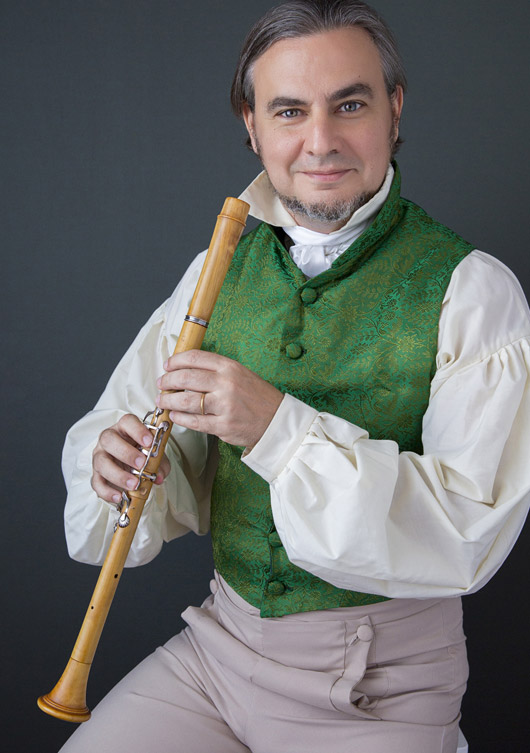
Czakan
Despite what many people believe, the recorder was not extinct in the Eighteenth Century. From the beginning of the Nineteenth century it enjoyed half a century of glory through the form of czakans, those curious recorders in A-flat (a major third below the descant recorder) that were initially built in the shape of canes, which became extremely beloved, especially by the amateur public in Central Europe, particularly in Vienna.
As great virtuosos, such as oboist Ernest Krähmer (1795-1837), started to appear, several structural changes to the czakan took place and were being promoted so that the instrument would become more accepted as a serious concert instrument: its cane shape started to be abandoned; its body assumed the shape of an oboe, receiving a bell; and several keys were added, in addition to other improvements that would vary by the model.
It is interesting to point out that although the instrument underwent all these modifications, the builders never seemed to be concerned with increasing the volume of the instrument but rather with highlighting the recorder’s main characteristics (such as its delicate stamp, great agility, articulation capabilities) and uniting them with new possibilities for the instrument (ease of legato execution and especially use of dynamic) thanks to the introduction of keys. In fact, there are citations about Ernest Krähmer in newspapers from that time which speak not only of the wonder of listening to the czakan in its great virtuosity but also of its incredible ability to whisper, almost to the point of not being heard.
After the premature death of Krähmer, the czakan’s primary proponent, the instrument went into decline and fell out of use completely around 1850.